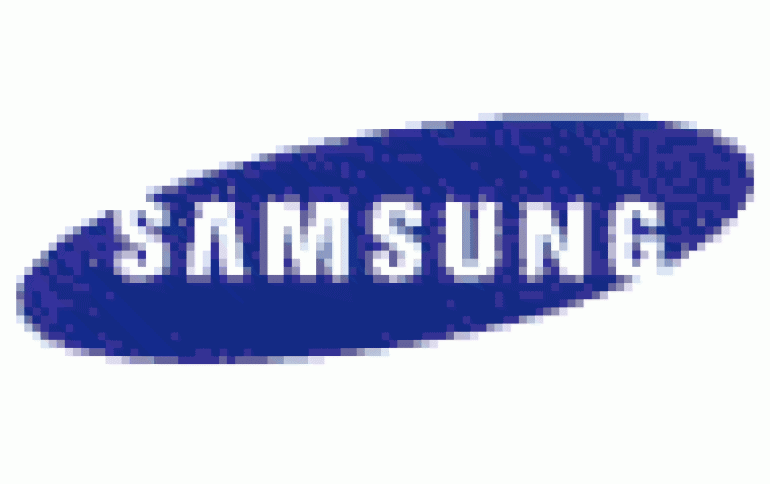
Samsung Develops 240 Hz LCD TV Technology
Samsung Electronics announced today that it has developed the world's first "Blue Phase" LCD panel, which will offer more natural moving images with an unprecedented image-driving speed of 240 Hertz (Hz).
Samsung is planning to unveil a 15" model of its Blue Phase LCD panel at the SID (Society for Information Display) 2008 International Symposium, Seminar and Exhibition, which will be held in Los Angeles from May 18 to 23.
Samsung Electronics Executive Vice President Souk Jun-hyung, who leads the Display R&D Center of LCD Business, said, "Our blue phase mode is a major evolutionary development beyond conventional liquid crystal modes. Samsung?s development of this technology provides a tremendous opportunity to move image quality of LCD screens much closer to that of a real moving image."
Developed with a cost-efficient design, the Samsung Blue Phase mode does not require liquid crystal alignment layers, unlike today's most widely used LCD modes such as Twisted Nematic, In-Plane Switching or Vertical Alignment. The new Blue Phase mode can make its own alignment layers, eliminating the need for any mechanical alignment and rubbing processes. This reduces the number of required fabrication processes, resulting in considerable savings on production costs. Additionally, blue phase panels will reduce the possibility of bruising the LCD panel interface (whereby pressure on the screen could impair uniform brightness).

Overdrive circuits are currently applied to each LCD panel to improve the video image quality in premium LCD TVs, which are driven at 120Hz. The blue phase mode features a superior response rate, allowing images to be reproduced at 240Hz or higher without the need for any overdrive circuit, Samsung claims. The term "Blue Phase" was coined when the technology?s developers observed bluish hues while watching their new liquid crystal mode in operation.
While other academic and corporate institutions have researched this new liquid crystal mode, Samsung is the first to unveil a commercially viable product prototype using the "Blue Phase" technology.
Samsung Electronics expect to begin mass-producing its Blue Phase LCD in 2011. The LCD panels will be mainly used in TVs that require high-speed video reproduction.
Samsung Electronics Executive Vice President Souk Jun-hyung, who leads the Display R&D Center of LCD Business, said, "Our blue phase mode is a major evolutionary development beyond conventional liquid crystal modes. Samsung?s development of this technology provides a tremendous opportunity to move image quality of LCD screens much closer to that of a real moving image."
Developed with a cost-efficient design, the Samsung Blue Phase mode does not require liquid crystal alignment layers, unlike today's most widely used LCD modes such as Twisted Nematic, In-Plane Switching or Vertical Alignment. The new Blue Phase mode can make its own alignment layers, eliminating the need for any mechanical alignment and rubbing processes. This reduces the number of required fabrication processes, resulting in considerable savings on production costs. Additionally, blue phase panels will reduce the possibility of bruising the LCD panel interface (whereby pressure on the screen could impair uniform brightness).

Overdrive circuits are currently applied to each LCD panel to improve the video image quality in premium LCD TVs, which are driven at 120Hz. The blue phase mode features a superior response rate, allowing images to be reproduced at 240Hz or higher without the need for any overdrive circuit, Samsung claims. The term "Blue Phase" was coined when the technology?s developers observed bluish hues while watching their new liquid crystal mode in operation.
While other academic and corporate institutions have researched this new liquid crystal mode, Samsung is the first to unveil a commercially viable product prototype using the "Blue Phase" technology.
Samsung Electronics expect to begin mass-producing its Blue Phase LCD in 2011. The LCD panels will be mainly used in TVs that require high-speed video reproduction.





















